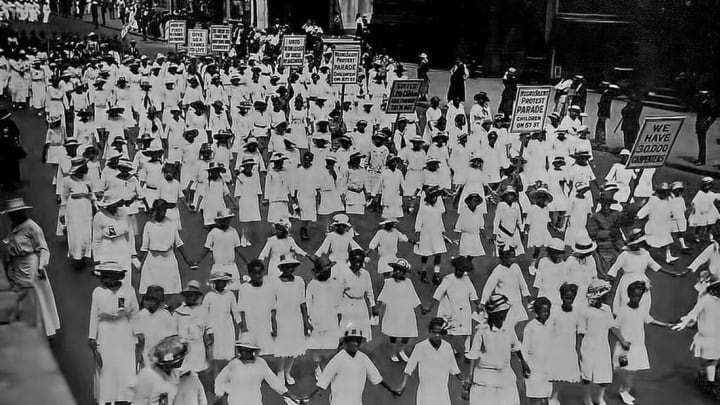New York City had never seen anything quite like it. On July 28, 1917, between the buildings and businesses of Fifth Avenue, roughly 10,000 black citizens made their way down the street. Handwritten signs protesting racial discrimination and violence emerged from the sea of marchers; police mingled with 20,000 onlookers, ready to intervene at the first sign of trouble. Whose defense they might come to was in question.
Known as the Silent Parade, the event was the first of its kind on American soil—a heavily publicized, massive, and organized condemnation of civil rights violations that had been plaguing the country. In 1916, black farmer Jesse Washington had been lynched in Waco, Texas; a mob scene in East St. Louis just weeks prior to the march saw upwards of 200 people killed.
To draw attention to these crimes, National Association for the Advancement of Colored People (NAACP) field secretary James Weldon Johnson rallied his Harlem branch to make a public spectacle of their anger. His word spread throughout the black community, and by 1 p.m. that day, Johnson was part of an ocean of citizens walking in silence to condemn the deplorable racism and white supremacist activities gripping American culture. The only sound heard was the beat of drums. Some onlookers wept.
The visual impact was augmented by their choice of apparel. The women and children wore white; the men wore black. Messages like "Thou shalt not kill" and "Your hands are full of blood" were written on signs. Some of them addressed President Woodrow Wilson, who they felt was failing to live up to campaign promises to make America a unified and tolerant nation.
The peaceful demonstration began at 57th Street and ended at Madison Square Park, which saw the assembly cheer out of a sense of victory. Displaying a mixture of benevolence and mourning, they had demonstrated that the black community would not stand passively while being victimized. Today, the Silent Parade—which is being remembered with a Google Doodle to commemorate its 100th anniversary—is recognized as being a pioneering step in the struggle to achieve equality for all.
